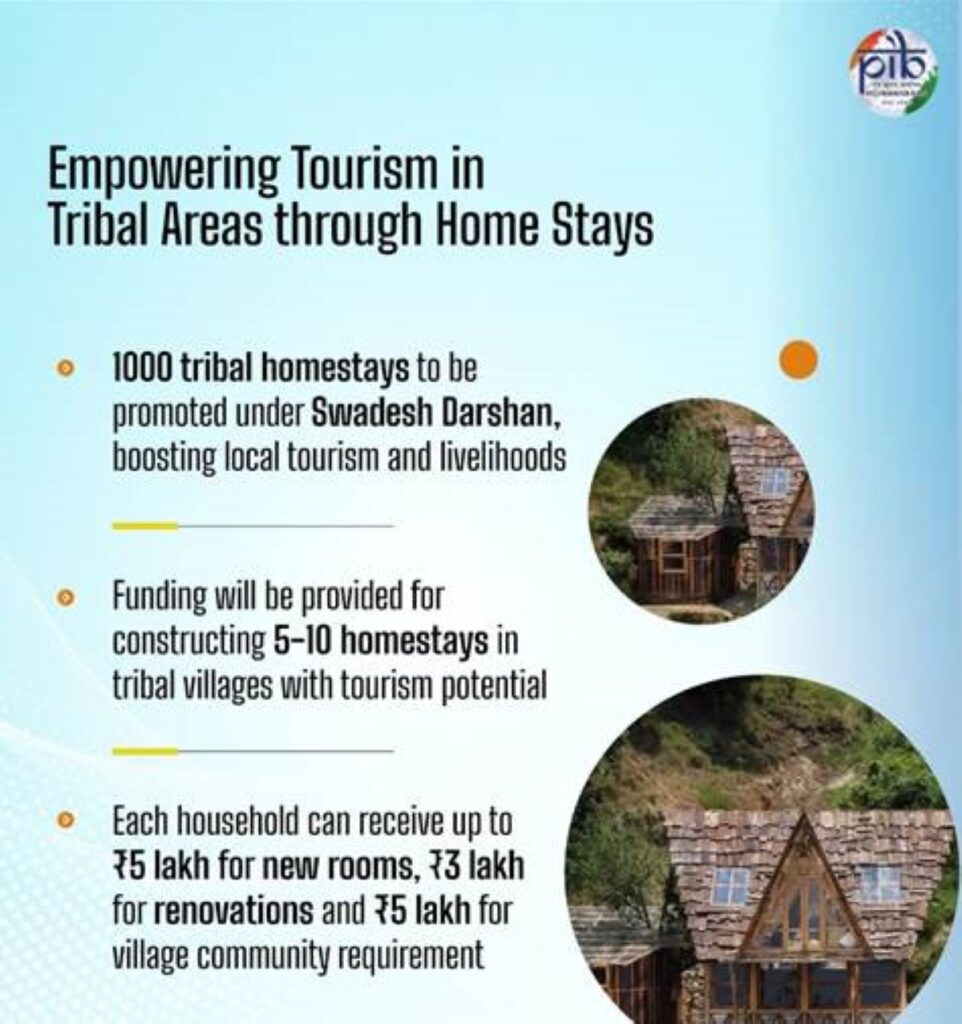Introduction to the Pradhan Mantri Janjatiya Unnat Gram Abhiyan
On September 18th, 2024, the Union Cabinet, chaired by Prime Minister Shri Narendra Modi, made a groundbreaking decision to improve the socio-economic conditions of India’s tribal communities. This decision was part of a comprehensive new initiative called the Pradhan Mantri Janjatiya Unnat Gram Abhiyan (PMJUGA). With a substantial outlay of Rs. 79,156 crore (Central Share: Rs. 56,333 crore and State Share: Rs. 22,823 crore), the program aims to address the fundamental needs of 5 crore tribal people across 63,000 villages in India’s tribal-majority districts.
This bold initiative will involve 25 interventions, executed across 549 districts and 2,740 blocks. Through a comprehensive approach, the mission seeks to saturate tribal-majority villages by addressing gaps in areas like health, education, livelihood, and social infrastructure. By utilizing the PM Gati Shakti Portal, the initiative ensures that gaps in tribal development are effectively mapped, monitored, and closed.
The Vision Behind Tribal Home Stays Under Swadesh Darshan
Among the many ambitious goals of the Pradhan Mantri Janjatiya Unnat Gram Abhiyan, one stands out: the promotion of 1000 Tribal homestays under the Swadesh Darshan Scheme. This scheme, driven by the Ministry of Tourism, holds the potential to revolutionize the tourism landscape in tribal areas. These homestays will not only attract domestic and international tourists but also provide an alternative livelihood for tribal communities, boosting local economies and enhancing cultural awareness.
With more than 705 tribal communities and a Scheduled Tribe (ST) population of 10.45 crore, the potential for showcasing these communities’ unique and rich heritage is immense. The Home Stays initiative under Swadesh Darshan allows tribal communities to retain their cultural identity while integrating into India’s growing tourism sector.
Empowering Tribal Communities Through Tourism
The Swadesh Darshan Tribal Home Stays scheme is aimed at areas with significant tourist potential. The strategy involves providing funding for developing tribal households and their villages to encourage the construction of Home Stays. The Ministry of Tourism will provide Rs. 5.00 lakhs for constructing two new rooms, and up to Rs. 3.00 lakhs will be available for the renovation of existing rooms. Furthermore, an additional Rs. 5.00 lakhs will be allocated for village-level community infrastructure needs.
By creating these 1000 Tribal Home Stays, the government aims to boost the livelihood of the tribal population by providing them with a stable, alternative source of income. This approach ensures that tribal communities do not have to rely solely on traditional occupations but can participate in sustainable tourism, thus creating a more resilient local economy.
A Rich Cultural Experience for Tourists
The Tribal Home Stays offer a unique opportunity for visitors to immerse themselves in the rich traditions and customs of India’s tribal communities. Each Home Stay will be a window into the daily life of these remote and hard-to-reach areas, giving tourists an authentic experience that cannot be replicated in urban settings.
For tourists, the Tribal Home Stay experience will include:
- Cultural Immersion: Visitors will experience the music, dance, rituals, and handicrafts of the local tribal communities, gaining a deeper understanding of India’s diverse cultures.
- Eco-friendly Lodging: The Home Stays will be built using local materials and sustainable construction techniques, ensuring that they blend harmoniously with the natural environment.
- Organic and Local Cuisine: Tourists will be treated to traditional tribal meals, made from organic and locally sourced ingredients, allowing them to savour the authentic flavours of tribal regions.
- Guided Nature Tours: Since many tribal villages are located in or near forests, hills, and wildlife reserves, visitors can explore the local biodiversity through guided treks and wildlife tours.

Holistic Development Through Convergence
The success of the Tribal Home Stay initiative is tied to the broader goals of the Pradhan Mantri Janjatiya Unnat Gram Abhiyan. By utilizing a convergence approach, the mission aims to tackle various aspects of tribal development in an integrated manner. The convergence of efforts from 17 different ministries ensures that resources are allocated efficiently and that interventions are coordinated to achieve maximum impact.
The Home Stays are just one component of this larger mission, which also includes schemes related to:
- Health and Education: Ensuring that tribal families have access to basic health services and quality education.
- Livelihood and Skill Development: Offering opportunities for vocational training and employment to tribal youth.
- Infrastructure Development: Improving roads, communication networks, and basic amenities in tribal villages to make them more accessible.
Monitoring Progress Through the PM Gati Shakti Portal
An essential element of the Pradhan Mantri Janjatiya Unnat Gram Abhiyan is the use of the PM Gati Shakti Portal. This portal will act as a centralized platform for monitoring both the physical and financial progress of the program. Tribal villages participating in the Swadesh Darshan Tribal Home Stays will be mapped on this portal, and any gaps in infrastructure or funding will be identified and addressed promptly.
The district-level competition will be promoted, with awards granted to the best-performing districts based on key performance indicators (KPIs) like homestay occupancy rates, tourist feedback, and the socio-economic impact on the local tribal population. This competitive element aims to inspire excellence and drive rapid improvements.
Conclusion: A New Era for Tribal Tourism in India
The promotion of 1000 Tribal homestays under Swadesh Darshan marks a pivotal moment for India’s tribal communities. By creating sustainable tourism opportunities and providing the necessary infrastructure, the Pradhan Mantri Janjatiya Unnat Gram Abhiyan promises to uplift tribal populations and preserve their rich cultural heritage for generations to come.
These initiatives highlight the government’s commitment to inclusive growth and the holistic development of India’s most vulnerable communities. As tourism flourishes in tribal areas, so will the prospects for improved livelihoods, cultural preservation, and sustainable development.
Read more at TravelMail | Follow us on Facebook | Twitter | and Instagram for on-the-go news

